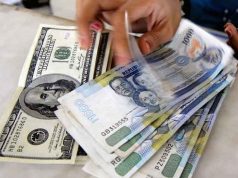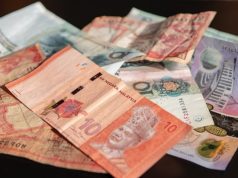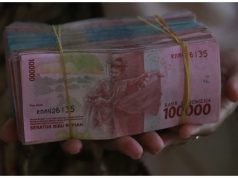- Philippine stocks hit over 1-1/2 year high
- US dollar strengthens for third straight session
- US inflation data due on Wednesday
(UPDATED 2:12 p.m.) Asian currencies were subdued on Tuesday, with the Philippine peso leading losses, as investors took a cautious stance ahead of a highly anticipated U.S. inflation report that could trigger a substantial interest rate cut from the Federal Reserve.
The Philippine peso <PHP=> lost as much as 0.5% by 0316 GMT, declining for a third straight session. The South Korean won <KRW=KFTC> and the Taiwanese dollar <TWD=TP> followed suit to give up 0.3% each.
The U.S. dollar index <=USD>, which measures the currency against six major peers, was at 101.69 after rising 0.4% on Monday.
The index has traded higher ever since a mixed labor report on Friday stoked uncertainty about whether the Fed would opt for a regular 25 basis point rate cut or a larger 50 basis point reduction at its Sept. 17-18 policy meeting, with investors turning to Wednesday’s U.S. inflation data for more cues.
“If that’s the case (higher-than-expected inflation), I would think recent outperforming EM Asia FX like THB could be (more) negatively affected than most due to a high correlation with not only the USD but also the gold price,” Poon Panichpibool, a markets strategist at Krung Thai Bank said.
Back in the Philippines, July imports rose 7.2% from a year earlier, resulting in the largest trade deficit since a $4.9 billion shortfall in March 2023, which could deplete the country’s foreign exchange reserves and increase demand for foreign currencies, putting downward pressure on the peso.
The Malaysian ringgit <MYR=>, however, added 0.3% and was the outlier among its peers after the country’s industrial production rose 5.3% in July and came in better than markets had predicted. The share market in Kuala Lumpur <.KLSE> rose 0.4%.
Equities in Southeast Asia clocked marginal gains, with those in Manila <.PSI> rising as much as 1.8% to their highest since Jan. 24, 2023. The benchmark has traded higher for the past four sessions.
Prospects of another rate cut by the Bangko Sentral ng Pilipinas (BSP) and the Fed’s dovish pivot have driven the country’s main stock index closer to the 7,000 mark.
Shares in Jakarta <.JKSE> and Singapore <.STI> added 0.4% each, while those in Bangkok <.SETI> lost 0.5%. Equities in Singapore touched their highest level since late May 2018.
Imports in China, Southeast Asia’s largest trading partner, fell short of expectations due to weak domestic demand in an economy that has failed to fire amid a prolonged property sector downturn. The Chinese yuan <CNY=CFXS> was last down 0.4%, and equities in Shanghai <.SSEC> dipped 0.5%.
With China’s exports growing by 8.7%, there are concerns Chinese goods could hurt the export prospects of countries such as Thailand at the same time as they may face difficulties exporting to China given its weak demand, Panichpibool said.
HIGHLIGHTS:
** Philippines trade deficit at $4.9 billion in July
** Malaysia end-August palm oil stocks up 7.34%, MPOB says
| Asia stock indexes and currencies at 01519 GMT | ||||||
| COUNTRY | FX RIC | FX DAILY % | FX YTD % | INDEX | STOCKS DAILY % | STOCKS YTD % |
| Japan | <JPY=> | -0.06 | -1.54 | <.N225> | 0.39 | 9.22 |
| China | <CNY=CFXS> | -0.06 | -0.29 | <.SSEC> | -0.53 | -8.50 |
| India | <INR=IN> | -0.01 | -0.90 | <.NSEI> | 0.26 | 15.04 |
| Indonesia | <IDR=> | +0.05 | -0.31 | <.JKSE> | 0.38 | 6.31 |
| Malaysia | <MYR=> | +0.25 | +5.35 | <.KLSE> | 0.34 | 13.92 |
| Philippines | <PHP=> | -0.30 | -1.92 | <.PSI> | 1.54 | 9.95 |
| S.Korea | <KRW=KFTC> | -0.30 | -4.24 | <.KS11> | -0.22 | -4.70 |
| Singapore | <SGD=> | -0.02 | +1.04 | <.STI> | 0.40 | 8.34 |
| Taiwan | <TWD=TP> | -0.30 | -4.51 | <.TWII> | 0.01 | 17.93 |
| Thailand | <THB=TH> | -0.10 | +0.89 | <.SETI> | -0.03 | 1.05 |
—Reporting by Roushni Nair and Sneha Kumar in Bengaluru; Editing by Sonali Paul








